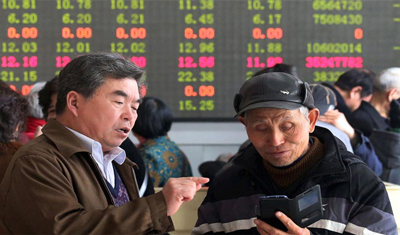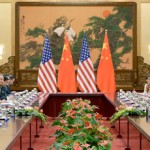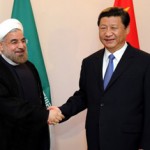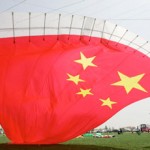China Unveils Economic Blueprint for 2016

Chinese leaders approved an economic blueprint for next year that emphasizes tackling long-term problems and reflects a realization that debt and investment can no longer power the world’s second-largest economy.
The plan, laid out at a closed-door conclave of senior party officials led by President Xi Jinping, comes as the country’s massive buildup of debt and legions of factories pumping out unwanted goods astride towers of empty apartments have become severe drags on economic output.
At the annual year-end meeting of China’s top economic mandarins, called the Central Economic Work Conference, senior officials who gathered at the heavily guarded Jingxi Hotel in western Beijing considered prospects that the country’s sluggish growth could linger as the old model has reached its limits, according to a senior Chinese official with direct knowledge of the meeting.
They discussed the potential for a long period of flat or stagnant growth, the official said.
“The economy will follow an L-shaped path, and it won’t be a V-shaped path going forward,” the official said, while ruling out any chances of China launching another round of aggressive stimulus measures like the one initiated in late 2008 to combat the global financial crisis.
Still, worries over a potential hard landing in China’s economy are “unwarranted,” the senior official said.
The official pointed to monetary and fiscal levers Beijing can still pull to help spur growth as well as the leadership’s determination to proceed with reforms that could put the economy on a stronger footing in the long run.
China had about $3.438 trillion in foreign exchange reserves as of the end of November.
The plan itself wasn’t publicly disclosed, and state media reports were vague about how the goals would be implemented. But the broad outlines illustrate Beijing’s latest effort to try to rebalance its economy by finding new sources of growth.
Senior leaders at the meeting also looked at tapping into Chinese consumers’ rising demand for safer food, better medical care and other quality-of-life improvements.
“We’re not facing a lack of demand,” the official with knowledge of the discussions said. “What we need to do is to carry out supply-side reforms to meet the unmet demand.”
The plan hammered out at the closed-door meeting, which started on Friday and ended Monday morning, nods to a host of chronic problems hindering China’s transformation into an economy driven more by consumption and less by debt and investment.
The plan calls for reducing industrial overcapacity, slashing its stockpile of unsold homes, lowering costs for businesses and mitigating financial risks, according to a communiqué released by China’s official Xinhua News Agency after the conclusion of the meeting Monday.
Meanwhile, the plan reveals a modestly dovish tone on fiscal and monetary policies.
It said China will run a larger fiscal deficit by cutting taxes—a change from past policies of expanding the deficit by increasing government expenditure. It also said monetary policy will be “flexible,” indicating it could continue loosening access to credit.
The leadership also set its annual growth target for next year at the meeting, but that figure won’t be disclosed until China’s legislature convenes in March, the senior official said.
Economists widely expect Beijing to announce a gross domestic product target for next year that is lower than this year’s benchmark of about 7%, which would signal a desire to make reforms at the expense of short-term growth.
China is set to report its slowest annual economic growth rate in 25 years, and many economists said it would struggle to reach the 7% goal.
President Xi has signaled that growth must be at least 6.5% annually for the next five years if China is to double per-capita growth and income by 2020 over 2010 levels.
Still, some remain doubtful that Beijing will implement the changes that could obtain the growth rate officials find crucial to their survival.
“We’re on track for reform failure,” said Derek Scissors, a resident scholar at the American Enterprise Institute, a Washington think tank. He pointed out that Beijing made similar promises to cut industrial overcapacity two years ago.
The renewed pledges come after China’s yearlong effort to stoke demand through interest-rate reductions and government spending, which has done little to bolster the economy.
Many economists say those measures have saddled Chinese companies and various levels of government with more debt, potentially putting the economy at greater risk.
Corporate debt now amounts to 160% of China’s gross domestic product, according to ratings firm Standard & Poor’s Ratings Services. That’s up from 98% in 2008 and compares with a current U.S. level of 70%.
One way to do that is to target overcapacity that has resulted in poor productivity and inefficient allocation of credit and other resources, according to the communiqué released by Xinhua.
China suffers from a glut of steel factories, glassworks and other emblems of the old economy.
Next year looks bleak as demand weakens and lower labor costs in neighboring countries make China less competitive, said Chen Qiaoqi, general manager of export-import company Shanghai Shuttle Bridge Developments Co. and its affiliated logistics arm. “Of Course we’ll have to cut workers,” probably by 10% of its 20-employee workforce, she said.
Ms. Chen said banks are reluctant to lend to small companies like hers and real borrowing costs are still high.
A main reason: competing against state-owned companies that enjoy preferential payment terms with suppliers and easy access to funding, she said.
“They can continue operating even when they lose money,” said Ms. Chen. If labor costs keep rising and financing is squeezed further “we’ll be driven out of business.”
The new blueprint, while vague on details, also pledges to restructure state-owned firms to improve their profitability.
In addition, China is struggling with a housing glut that has suppressed investment in property, traditionally a big driver of China’s growth. The communiqué said China will overhaul its household registration system to allow more rural residents to come to cities and spur demand for homes. among other measures. It also said the government will encourage developers to lower prices.
The economic plan also calls for slashing costs for business and fending off financial risks, said the communiqué, without disclosing additional details.
The plan appears to have laid out “sound policy goals though the key to future reform is implementation,” wrote Yu Song, a Beijing-based economist at Goldman Sachs Group Inc, in a research note issued early Tuesday. “We expect the pace of reforms to be modestly faster in 2016 than the recent past given the heightened focus of the leadership.”
Source: WSJ – China Unveils Economic Blueprint for 2016





























